MV Hamnavoe Took Short Crossing In Severe Weather
Submitted by Bill Mowat
22nd January 2012
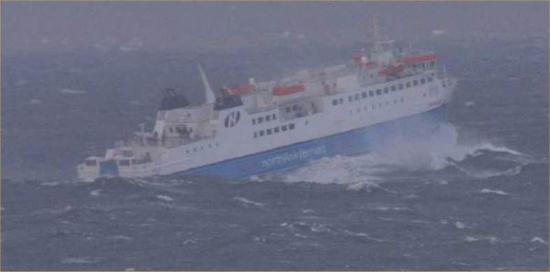
The 'short sea route' came into its own early last Saturday (21.01.12) afternoon in an unusual manner as storm-force Westerly severe gales swept huge Atlantic Ocean breakers into the Pentland Firth …
And the crossing of the narrowest Eastern End of the Firth between Canisbay Parish and South Ronaldsay enabled Orkney to maintain its sea-link with Caithness on one of the wildest sea-days of the 2011/12 winter so far, a season where weather patterns have been dominated by a series of deep atmospheric depressions sweeping in from the West in quick succession.
The trip was not done by Pentland Ferries' Pentalina, which normally plies the route thrice-daily, but by NorthLink Ferries' Hamnavoe which made an exceptionally-circuitous crossing from Scrabster to Stromness, adding just an hour to her scheduled 90 minutes' of sailing time.
A strong West-flowing ebb-stream was running in the Pentland Firth, opposing big incoming swells in the Merry Men of Mey tide-race giving multi-directional breaking seas of at least 8 metres in height, shore observers in Caithness said.
The 8,000 tonne vessel got into calmer waters once she emerged on the East side of the 1.5 miles wide tide-race, whose white-water breaking seas act as a natural 'breakwater' by soaking up and dissipating the force of the incoming swells anywhere to the East of Caithness's St John's Point, the western extremity of Gills Bay.
On an average during 40 crossings per year, Hamnavoe diverts from her regular route via St John's Head and the 'Old Man' … which is exposed to the full force of incoming Atlantic swells throughout almost all of its 28 mile length …. to enter the Firth and then catch the lee of Hoy by sailing round Cantick Head and through Scapa Flow and so on to Stromness. She often has to pass through the Merry Men of Mey, which is c. 1.5 miles wide and stretched from St John's Point on the North Coast to Tor Ness in Hoy while either inward or outward bound, as there are two ebb-tides taking up half of the time per day.
But last Saturday's route that her Captain chose was different; she continued to sail generally Eastwards parallel with the Caithness coast.
She passed through the Firth's narrow 1.5 mile-wide Inner Sound, stemming the ebb-stream and passing to within three-quarters of a mile of Gills Harbour and continued her eastwards journey until she was abreast of Duncansby Head, mainland Scotland's most North-easterly point.
There she turned almost due North for a point just off Burwick (South Ronaldsday's Southern tip) and Swona, before entering Scapa Flow by Hoxa South and sailing on to Stromness.
This is the first time since the Scrabster :Stromness link was established in 1945 that local folk on the Caithness shore are aware of this route being used.
But older local people, including retired postman/crofter Hamish Donn, of Lower Warse, Caithness, on the shores of Gills Bay, recalled that in pre-war times, the Royal Mail Steamer RMS St Ola, used to regularly sail through the Inner Sound during poor sea-weather in her once-daily crossing to Scapa Bay Pier. The official destination then was the nearby Kirkwall GPO; it ended in 1945, after which first-class post to Orkney went by air-mail at 'inland' prices. Prior to the 1974 introduction of RO:RO services with St Ola (III), diversions to Wick were not uncommon, but those trips did not involve sailings through the Firth's Inner Sound.
Very exceptionally, all three Pentland Ferries return crossings on Saturday were cancelled; during several previous winters in the 'Noughties' the Gills to St Margaret's Hope service managed at least one return scheduled crossing every day, even in 'poorish' weather.
Bill Mowat, chairman of Gills Harbour Ltd, the trading company 'limited by guarantee from the 450-strong Canisbay community that owns and operates the port at the inland apex of Gills Bay said; 'We have always backed experienced mariners in their correct claim that the 'short sea route' is the shortest, smoothest and quickest way to journey from Caithness to Orkney and it's reassuring that we've proved right in this rather unusual circumstance.
'But perhaps only persons that needed to travel would choose to experience such sea conditions. I expect that many Orcadians would have postponed their trips until the next day, when, as it transpired, conditions were back to normal'.
Related Businesses
Related Articles
Northlink Ferries disruption warning to customers 
Current forecasts indicate the possibility of disruption to our services from Saturday 27th January through to the evening of Monday 29th January. Information will follow as forecasts update.
Northlink Ferries Weather Disruption - Changes To Times And Cancellations
Early disruption warning to customers Current forecasts indicate the possibility of disruption to our services from the evening of Sunday 21st January through to the evening of Tuesday 23rd January. More information will follow as forecasts update.
NorthLink Ferries opens booking system for 2024
Serco NorthLink Ferries has officially opened its booking system for the full calendar year ahead - giving customers the opportunity to book forward travel up to the end of December 2024. Billy Robb, Customer Service Director for NorthLink Ferries, said, "We are pleased to be able to open our booking system up to December 2024, allowing people to book travel in spring, summer and beyond, both to and from Shetland and Orkney.Northlink Ferries Mv Hjaltland Crew Raises Over £4,800 For Clan Cancer Support
Serco NorthLink Ferries staff have raised over £4,800 in support of Clan, a charity supporting those affected by cancer across north-east Scotland. Staff on board and ashore - led by Kathryn Fullerton, Retail Supervisor on the MV Hjaltland - carried out fundraising activities over the course of last year to gather funds for the charity.No Replacement Vessel To Cover Scrabster Route During Hamnavoe Refit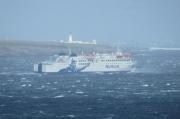
The lifeline ferry service between Stromness and Scrabster will cease operation completely for a fortnight this winter, NorthLink Ferries has confirmed. The route is to be shutdown from January 31 until February 13 while mv Hamnavoe goes into dry dock for maintenance.
Ferry Problems Getting Worse In The Scottish Fleet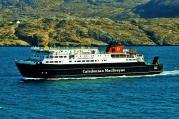
Highlands and Islands Labour MSP Rhoda Grant has again written to the Transport Minister Graeme Dey demanding Scottish Government address the urgent issues facing Scotland's Ferry Fleet. Following CalMac's announcement that it had been forced to amend timetables as the MV Hebrides was from the rotation for urgent repairs, it became clear that some communities were facing loss of their ferry service for days.
Serco NorthLink Ferries reveals passenger numbers for first two months of 2021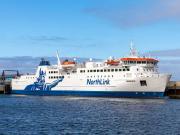
Serco NorthLink Ferries recorded more than 8,000 journeys during the start of 2021 as it continues to support essential travel. The service remains aligned to the Scottish Government's Strategic Framework, with NorthLink Ferries providing key worker, essential islander and freight connectivity between the Northern Isles and mainland Scotland.
Serco NorthLink Ferries provides update on latest travel figures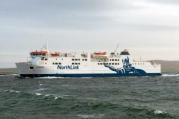
Serco NorthLink Ferries is continuing to maintain vital transport links over the autumn and winter period - following the opening of its 2021 booking system at the start of October. The service remains aligned to the Scottish Government's Strategic Framework, and while passenger and car volumes are down significantly year-on-year they have shown further signs of strengthening over the last few months.
Serco Northlink Ferries Introduces Pet-friendly Cabins On Board
Four-legged friends can now travel with their owners between the Scottish mainland and Orkney and Shetland - thanks to new pet-friendly cabins on NorthLink Ferries passenger vessels MV Hamnavoe, MV Hjaltland and MV Hrossey. Each ship has two pet-friendly cabins available which have en-suite facilities, side-by-side lower twin bunks and tea and coffee making facilities.
Serco NorthLink Ferries publishes passenger volumes across first phases of lockdown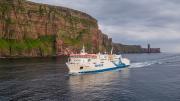
Serco NorthLink Ferries has been operating a revised service during Phase 1 and 2 of lockdown, which has provided travel for key workers as well as essential islander and freight connectivity between the Northern Isles and mainland Scotland. During the period 22 March to 30 June, passenger numbers across all routes were 6,010 in comparison to 112,416 over the same period in 2019, representing a reduction of 95 per cent.
